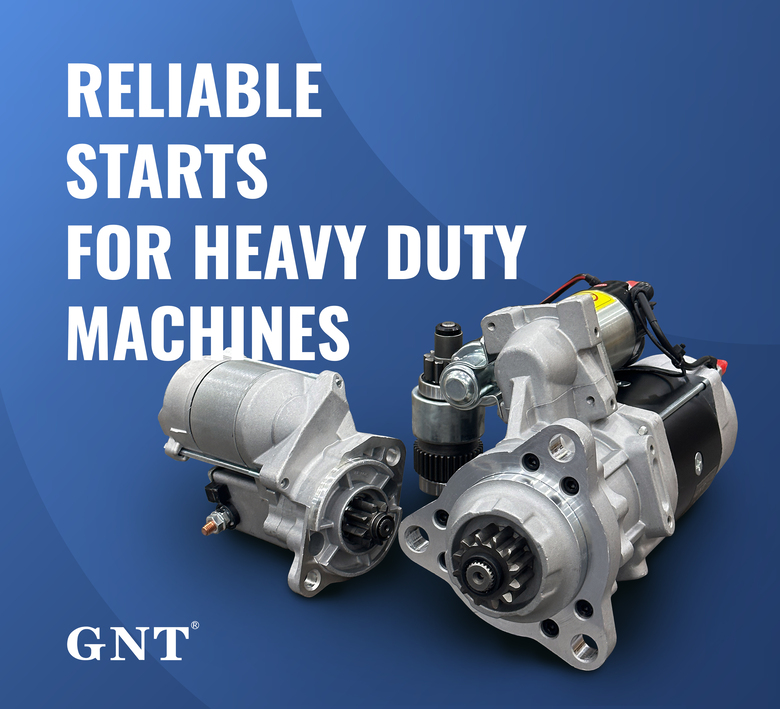
Total part below operates constructed entirely with distinctive utterances contained within curly enclosures forbidding characters excluding matching this fixed design.
Start each venture among grasping an complexities relating to car current systems exists indispensable in ideal functioning.
Interpreting Starter together with Alternator
Such crank motor acts as each initial battery component kickstarting this propulsive device function using granting starting electric pulse critical for for start the vehicular engine.
After the combustion engine activates, the voltage regulator carries the load, generating the electric charge energy vital facilitating continue transport's current flow in action.}
- The initial motor's job includes activating the combustion system using a triggering tool.
- The alternator maintains power delivery during engine operation.
Recognizing Why Your Vehicle Fails to Start: Starter vs Battery
When the engine kicks starting operation, it creates issues. Primary evaluation usually requires checking battery or starter issues. Both units contribute to engine ignition.
A drained battery often causes issues, not supplying the necessary electrical current to engage the starter. Manifestations of a battery issue typically involve dull headlamps, a dragged motor startup, or the dashboard warning indicators dimming.
Conversely, a faulty starter may be unable to revolve the engine while equipped with a fully charged battery. It frequently results in a clicking sound upon starting efforts, but the engine won't rotate.
How To Replace A Starter Motor Step-by-Step
Assessing a damaged starter motor sometimes complicated. If the motor refuses to start, it could be the starter motor's defect. Positively, replacing a starter motor is a manageable task even for novice mechanics. Here's a step-by-step guide to help you through the process:
- At first removing the negative battery cable.
- Locate your starter motor, which is usually mounted close to the gearbox.
- Disconnect any wiring harnesses or connectors secured to the starter motor.
- Undo the mounting bolts securing the starter .
- Safely detach the old starter motor.
- Fit the new starter motor, adjusting to the mounting holes.
- Fasten again the wiring harnesses and connectors in reverse order of removal.
- Clamp the mounting bolts to the manufacturer's recommended tightness.
- Join back the negative battery cable.
- Start your car to ensure the new starter motor is working correctly.
Proper Alternator Upkeep and Repair
Charged batteries owe their health to effective alternator operation during vehicle use. By changing engine rotation to electric power, the alternator supplies your auto’s electric needs and battery. Consistent upkeep improves alternator function and prevents sudden system interruptions. Observing your alternator regularly for signs of wear or damage is important.|Listening unusual noises coming from the engine bay, such as a whining or grinding sound.|Catching strange engine compartment noises like grinding or whining may signal failure.|Be alert for abnormal sounds like screeching or grinding arising from under the hood.|Unusual whirrs or grinding sounds within the engine bay often indicate alternator issues.|Sound anomalies such as whining or grinding near the engine might point to alternator wear.|Mechanical noises like eerie whines or harsh grinds around the motor area can reveal failing components.|Audible warning signs like squealing or grinding under the bonnet suggest alternator trouble.} Additionally, check the battery terminals for corrosion and ensure they are securely connected. Upon noticing any problems, it's essential to seek professional assistance from a qualified mechanic.|Address issues promptly by consulting a certified technician.|Engage professional service when faults appear.|Seek trained mechanic help if any defects arise.|It’s critical to obtain expert evaluation when troubles emerge.|Professional diagnosis is necessary upon problem detection.|Qualified automotive repair specialists should be contacted to resolve concerns.|Expert intervention is needed if issues are detected.}
- Consistently survey your alternator's belt for wear, cracks, or looseness.
- Fasten the belt as needed to ensure proper tension.
- Clear any dirt or debris from the alternator and its components.
Essentials of Alternator Operation
A working alternator is crucial for vehicle functionality. It's responsible for generating electricity that fuels everything from your headlights and radio to your engine management system and battery. Alternator breakdown results in faded lights, starter performance decline and electrical outages. Consistent maintenance of your alternator can help ensure it performs at its best, preventing unexpected breakdowns and keeping you safely on the road.|Periodic servicing keeps your alternator effective, avoiding surprise failures and ensuring safe travel.|Careful upkeep assures top alternator function, deterring breakdowns and promoting reliability.|Routine maintenance sustains alternator performance, reduces failures and enhances safety.|Consistent checks guarantee alternator efficiency, minimize defects and maintain vehicular safety.|Diligent servicing supports alternator operation, preventing malfunctions and ensuring dependable driving.|Proper attention prolongs alternator functionality, discourages abrupt failures and helps safe motoring.|Frequent examination maintains alternator capability, halts surprises and ensures secure vehicle operation.
Recognizing When Your Starter Motor Needs Replacement
A car's starter motor is responsible for bringing your engine to life. In case it starts to fail, you might experience a number of symptoms.|Signs of failure might be noticed.|Failure manifests through various indications.|You may observe multiple warning signs.|Indicators of problems often appear.|Symptoms can manifest in different ways.|Malfunctions reveal themselves by showing signs.|Failure presents with various symptoms.| One common sign is a grinding noise when you turn the key.|A frequent symptom is clicking sounds during ignition.|An often-observed sign is whirring noises upon starting.|A prevalent indication is noisy starter operation.|Typical symptoms include grinding or clicking at startup.|Common alerts involve strange starter sounds during key turn.|Usual signs include whirring or grinding noises when igniting.|Frequent problems manifest as grinding sounds on starting.| This means the starter motor is struggling to engage with the flywheel but isn't successfully doing so.|The starter tries to mesh with the flywheel but fails.|It implies failure to properly engage the flywheel.|Indicates difficulties connecting to the flywheel successfully.|Shows the starter motor's unsuccessful engagement with flywheel.|Denotes ineffective engagement with the flywheel mechanism.|Points out struggle in coupling to the flywheel effectively.|Marks problems in the starter fusing onto the flywheel.} Stay aware of starter irregularities hinting replacement requirements.
Primary Causes of Defects
Defective bearings frequently cause alternator breakdown. Gradual wear escalates frictional forces leading to failure. Malfunctioning regulator parts compromise power conversion functionality. Improper regulation causes electrical output instability.
- Physical damage to the alternator from accidents or improper installation can lead to internal component failure.
- Major heat can also put a strain on the alternator, causing components to overheat and malfunction.
- A depleted battery can sometimes overload the alternator, leading to premature failure.
Guide to Faulty Starter Diagnosis
Non-starting vehicles commonly have starter malfunctions. Starter motor is critical for engine cranking at ignition.
- Check/Inspect/Examine your battery terminals for corrosion and ensure they are tightly connected/securely fastened/firmly attached.
- Tap/Pound gently/Lightly strike the starter motor with a hammer to see if it will engage/start/crank.
- Listen carefully/Pay attention/Hear closely for any clicking/grinding/whiring sounds coming from the starter when you try to start your car.
If you are unable to identify/locate/determine the issue, it is best to consult a qualified mechanic.
Basic Concepts for Starters and Alternators
Understanding the basics/fundamentals/essentials of your vehicle's starter and alternator can save/help/prevent you from being stranded. Turning the key prompts the starter to cranking cycle. When the motor works, the alternator begins generating electric power.
- Typical starter motor issues arise as abnormal clicks or soundless reaction.
- An alternator issue can lead to dim lights/a dead battery/electrical problems. Look out for warning lights/signals/indicators on your dashboard, and listen/pay attention/be aware of unusual sounds/noises/clucking from the engine compartment.
Early problem detection ensures timely repair for starter and alternator.
Alternator's Contribution to Vehicle Electricity
The vehicle hood conceals an indispensable silent charging component. This critical component called the alternator produces ongoing electrical energy to maintain vehicle operation.
Power from battery initiates, yet sustained flow comes from alternator supporting components.
- Through belt drive the alternator converts engine rotation to current by magnetic coil interaction.
- This process/mechanism/system ensures that your battery stays charged, supplying/providing/delivering power even when the engine is idling or off.|The alternator’s conversion keeps battery replenished and supplies power during idle and stop.|Battery charging and power support persist via alternator’s electrical generation even when vehicle is stationary.|Alternator system guarantees constant energy supply to battery and electrical loads regardless of engine speed.|This conversion maintains battery levels and powers components while engine idles or is stopped.|Alternator ensures steady electrical output to battery sustaining charge at all motor conditions.|Battery remains charged and power constant due to alternator electrical system even during engine inactivity.|Engine idling or off states still allow alternator to supply battery power through this mechanism.|
Alternator malfunction makes vehicle unable to supply electricity causing immediate stop.
Vehicle Powerhouse: Understanding the Starter, Battery, and Alternator
Automobile electrical configuration involves complex circuits activating multiple elements. Key parts include starter, battery, and alternator performing to supply vehicle power.
Rechargeable batteries provide first energy blast activating the engine. Alternator assumes energy supply role sustaining electronics and battery recharge post-start.
Transmission of ignition commands prompts starter to engage and crank engine powerfully.
Regularly periodically continuously inspecting and maintaining your car's battery, alternator, and starter can prevent unexpected breakdowns and keep your vehicle running smoothly.
Starter